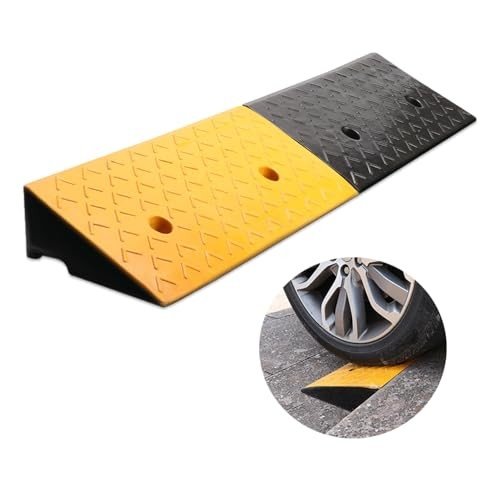
Disability Ramps
FollowOverview
-
Founded Date September 26, 1977
-
Sectors Engineering and Construction
Company Description
See What Metal Ramps For Wheelchairs Tricks The Celebs Are Using
Metal Ramps for Wheelchairs: A Comprehensive Guide
Browsing physical barriers can be an obstacle for individuals with mobility problems. One solution that has gotten popularity is using metal ramps for wheelchairs. These ramps offer higher access to homes, offices, and public spaces, boosting self-reliance and mobility for wheelchair users. This post intends to inform readers about the functions, advantages, and considerations surrounding metal ramps, total with a FAQ area and helpful tables for simple comparison.
Understanding Metal Ramps
Metal ramps for wheelchairs are usually constructed from products such as aluminum or steel, making them a long lasting and strong alternative for people needing mobility assistance. Unlike wooden or plastic ramps, metal ramps can stand up to differing climate condition, resistance to deterioration, and have a longer life-span.
Secret Features of Metal Ramps
- Product: Most metal ramps are made from lightweight yet resilient aluminum or much heavier steel. Aluminum is typically preferred for its resistance to rust and ease of portability.
- Design: Many metal ramps been available in a folding style, making them easy to transport and store.
- Non-Slip Surface: This function helps guarantee that both the wheelchair and the specific remain secure while using the ramp.
- Weight Capacity: Metal ramps are created to support a vast array of weight limitations, dealing with numerous wheelchair sizes and users.
- Adjustability: Some ramps use adjustable heights and angles, accommodating various entry points.
Kinds Of Metal Ramps
| Type | Description | Pros | Cons |
|---|---|---|---|
| Long-term Ramps | Set up at a fixed location for long-term usage. | Tough, custom-fitted for specific requirements. | More costly, needs installation. |
| Portable Ramps | Lightweight and easy to transportation; ideal for several areas. | Versatile, easy to store. | Might not be as strong as long-term ramps. |
| Folding Ramps | Can be folded in half or thirds for storage and transport. | Space-saving, easy to use. | Restricted weight capacity compared to non-foldable. |
| Multifunction Ramps | Created for both wheelchair and scooter users, these ramps accommodate different mobility gadgets. | Adaptability for different users. | May need further specifications for optimum usage. |
Advantages of Using Metal Ramps
- Enhanced Mobility: They offer wheelchair users with higher access to various locations, enabling for more self-reliance.
- Safety: Metal ramps often feature non-slip surfaces, minimizing the risk of mishaps throughout use.
- Economical: While the preliminary investment may be higher than plastic or wood, metal ramps tend to last longer, making them an economical option in the long run.
- Flexibility: Many metal ramps can be utilized for both residential and commercial settings, accommodating a wide variety of environments.
- Weather condition Resistance: Metal ramps, specifically aluminum ones, are resistant to rust and can withstand various weather condition conditions without compromising safety.
Considerations Before Purchase
When considering the installation or purchase of a metal ramp, several aspects should be assessed:
| Consideration | Description |
|---|---|
| Location | Assess where the ramp will be installed and guarantee it fits the space available. |
| Slope | Ramps should typically have a slope ratio of 1:12 for basic wheelchair access. Seek advice from regional codes for particular standards. |
| Weight Limit | Ensure the ramp can support both the user and their mobility gadget. |
| Installation Needs | Determine if the ramp will be set up completely or utilized for mobility. |
| Budget plan | Account for the total cost, consisting of setup and upkeep, if appropriate. |
Regularly Asked Questions (FAQ)
1. What is the perfect slope for a wheelchair ramp?
The Americans with Disabilities Act (ADA) advises a slope of 1:12, which indicates for every inch of height, there ought to be at least 12 inches of ramp run.
2. How do I select the best ramp for my needs?
Consider your specific requirements, including weight capability, portability, the frequency of use, and the environment where the ramp will be set up or used.
3. Are metal ramps adjustable?
Yes, many metal ramps offer features such as adjustable heights and angles to accommodate different entry points and conditions.
4. How do I keep a metal ramp?
Routine evaluations for rust or wear and tear, along with cleaning up to guarantee the non-slip surface area remains efficient, will help preserve the ramp’s condition and safety.
5. Can metal ramps be utilized outdoors?
Absolutely! Metal ramps are particularly created to endure outdoor conditions. Aluminum ramps are particularly resistant to rust, making them appropriate for extended outdoor use.
6. What is the typical cost of a metal ramp?
Costs can differ commonly based upon size, product, weight limitation, and style. On average, portable metal ramps can range from ₤ 100 to ₤ 500, while long-term ramps may cost ₤ 1,000 or more depending on setup requirements.
Metal ramps for wheelchairs are not simply functional; they embody the spirit of accessibility and self-reliance for individuals with mobility difficulties. By considering the different types, features, and benefits of these ramps, as well as evaluating personal needs and readily available environments, people and caretakers can make informed decisions. With the best metal ramp in location, barriers become more workable, enabling increased mobility and flexibility.
For anybody in the market for availability options, investing in a quality metal ramp is a step towards a more inclusive environment. Whether for home use or public areas, the benefits of metal ramps considerably surpass the obstacles, leading the way for simpler and much safer navigation.

